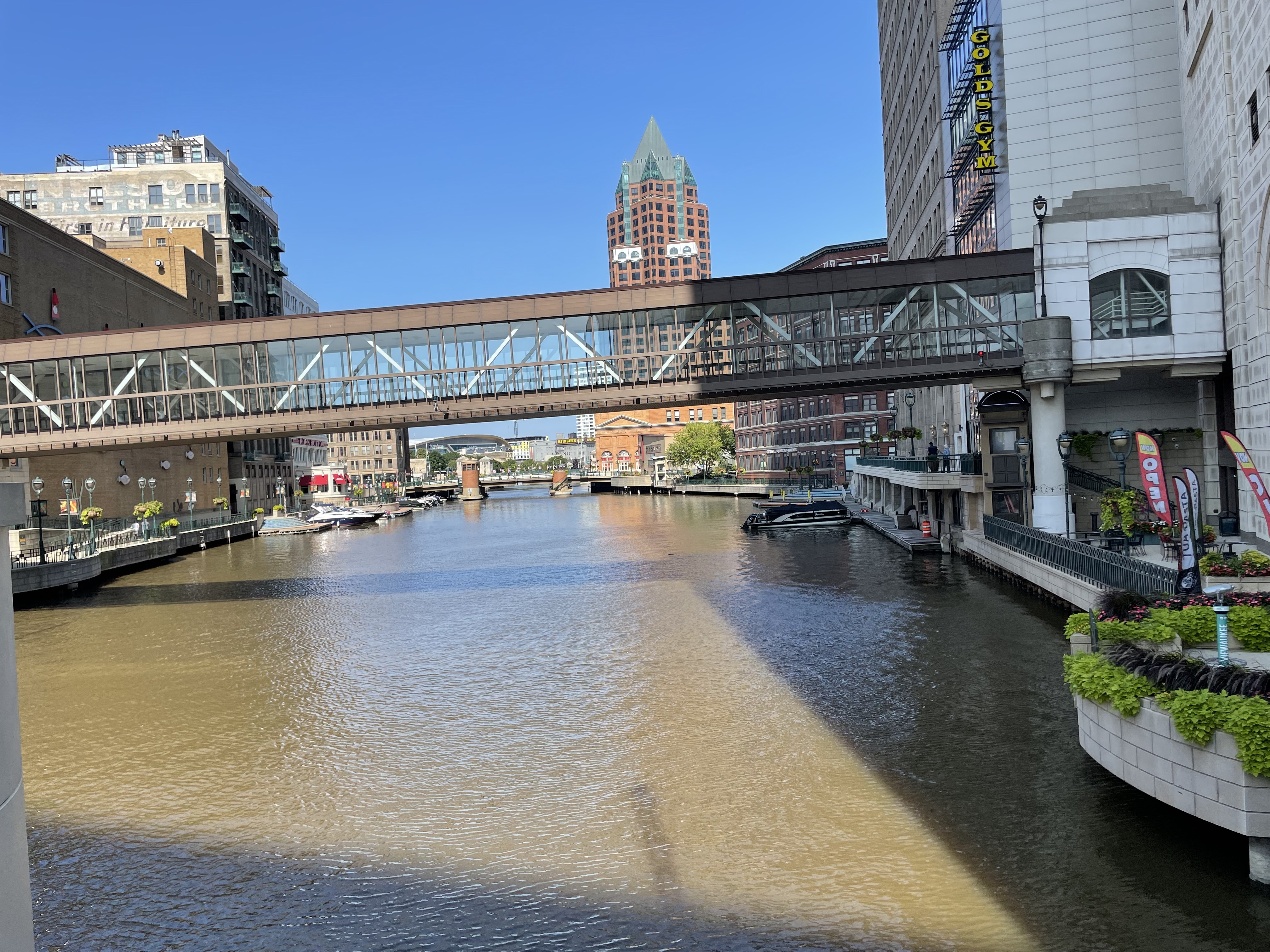Image caption: The Milwaukee River winds right through downtown, and is pictured here after a major rainstorm.
“Communities are brilliant in their own right, and the easiest way to turn people off is to tell them you know more than they do about where they live.”
– Marccus Hendricks, Stormwater Infrastructure Resilience and Justice Lab, speaking at the One Water Summit
Last year, I had the pleasure of helping to release the Oregon Water Futures report, which summarized a series of conversations with Oregon’s communities of color. I remember lead author Dr. Alaí Reyes-Santos talking about how each of these communities held deep expertise around water, but eliciting it required the right questions, because the language of water policy (and supply, and safety and service…) is so often dry and technical.
Then last week, at the One Water Summit, I found myself at a table with organizers like Susana de Anda from Community Water Center and Ayanna Jolivet Mccloud from Bayou City Waterkeeper talking again about how the language of water is designed to exclude people and to sanitize issues that are close to our lives and hearts.
“The problem is disconnection. Many communities that had an intimate connection to water have had them erased…We see ourselves as separate,” said Susana.
That was at a breakfast organized by the Water Equity and Climate Resilience Caucus. We were talking about the root causes of our water challenges, and ways caucus members can build power to solve them. The conversation kept circling back to the importance of centering community expertise, which was a theme of several summit sessions I attended.
As I listened to panelists from across the water sector, I was really struck by the differences in the words people used to talk about problems of too much or too little water, unaffordable bills, and water that’s not safe to drink or even rinse a piece of fruit.
I felt it in my body when Ben Hirsch from West Street Recovery talked about the clogged ditches in Eastern Houston that flood homes again and again during ordinary storms, so the structures are too weak to withstand real disasters. Or when Cheyenne Holiday from Verde said that water justice in her community means “clean drinking water, and water that’s safe to play in.”
Ben and Cheyenne were painting a picture of home and family, using words that anyone can understand and locate in their lives.
When we talk about water as a resource rather than a right, and frame it in terms of acre feet or parts per billion or service lines, that saps all the humanity out of it, and paves the way for inhumane policies.
These themes of accessibility, inclusion and valuing lived experience are threads that run through all the Water Hub’s work. They helped to inspire our Color of Water Initiative, and inform all of the materials we create, from tweets to factsheets. We know water runs through all our lives, and want our communications to reflect that deeply personal relationship.
But even communications folks like us sometimes lean on shorthand, acronyms, or technical terms. When you’re immersed in water work (pun intended!), it’s tempting to assume that everyone knows about groundwater, watersheds, or contaminants of concern. But we know from polling that, while people may have intimate knowledge of how runoff backs up in their neighborhoods, they probably aren’t calling it stormwater or nonpoint source pollution.
We are developing a “water words that work” training to help experts and advocates in our network communicate in language that will connect with community concerns.
Sign up for our newsletter to hear when it’s scheduled later this fall. And if you’re working on groundwater, this new glossary from Self Help Enterprises, Community Water Center, and Leadership Counsel may be worth a look (available here in Spanish).
